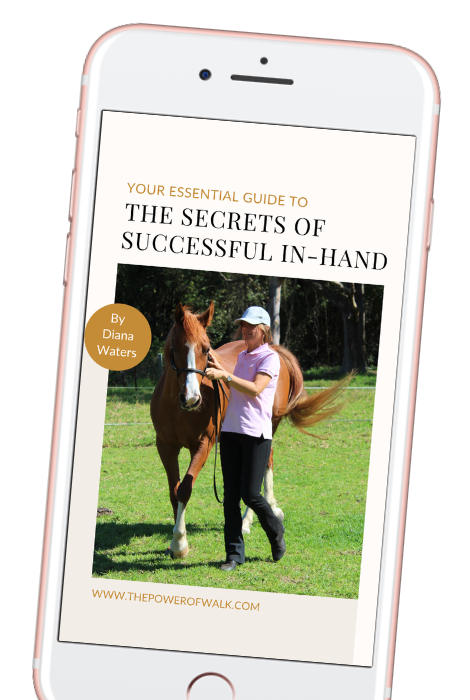
Why long and low may not be the best solution to kissing spines
The horse’s back and topline being stretched is preferable to it being contracted and hollow, especially when a horse is at risk from kissing spines, because the touching parts of the vertebrae are separated by the stretch.
However, while most people recognise the damaging effect of overstretching through Rollkur, the dangers of overstretching through long and low are often overlooked.
When the back is lifted artificially by lowering the head and driving forward, the back is raised passively using the ligament system not the topline muscles. By dropping the head and bringing the nose and hind legs closer to one another, the back can easily be lifted beyond a point where the muscles are able to support this.
Take a look at this image of a horse whose back has been lifted to the extreme by driving forward whilst keeping the head down using a German String. The pelvis has been rotated, curled and tucked under without the corresponding lifting of the forehand, so the hind legs reach well under the body and push forward, but we can see a huge amount of tension and strain in the muscles of the hind legs and hindquarters, as well as in the neck. One part of the body (the thoracic and lumbar spine) has been lifted and stretched by stretching the nuchal and supraspinous ligaments with no help from the muscles.
If the horse wanted to begin to engage the neck muscles to lift the thoracic sling, they would be unable to, as the German String does not allow the head and neck to lift. The tail is lowered, but the slope of the back from withers to pelvis is unchanged, putting a lot of strain on the sacroiliac joint as it is stretched to its limit.
The second image shows Vikingur on the lunge with no auxiliary reins after having been slowly trained over time to lighten and lift the forehand using walk work. The muscles required to do this were built slowly and gradually over time, and his muscle memory was gradually built so that to lift the forehand became second nature. This was the first time I tried lungeing him and released him into trot. The lowering of the haunches here was achieved in conjunction with raising the forehand, so the pelvis did not rotate and tuck under relative to the back, and the sacroiliac joint was in neutral and not overstretched. This allowed fluid movement in all directions. By training the muscles to lift the forehand and lower the haunches, the horse is able to moderate the amount of stretch, allowing absorption of movement in all directions.
I can see the logic of separating the dorsal spinous processes to the extreme to relieve the symptoms of kissing spines, by artificially lowering the head. However, in my experience the same can be achieved without overstretching, by gradually teaching the horse to use the topline muscles to lift the thoracic sling and realign the spine. This is much better because we are not so likely to cause pain in other areas of the body like the SI joint and the muscles of the hindquarters and neck, as well as the overstretched ligaments. Also, the horse is able to sustain this posture without support, and will choose to do so when they realise it feels good.
The photo below shows long term improvement to a horse with kissing spines, brought about using slow, connected and targeted walk work.




